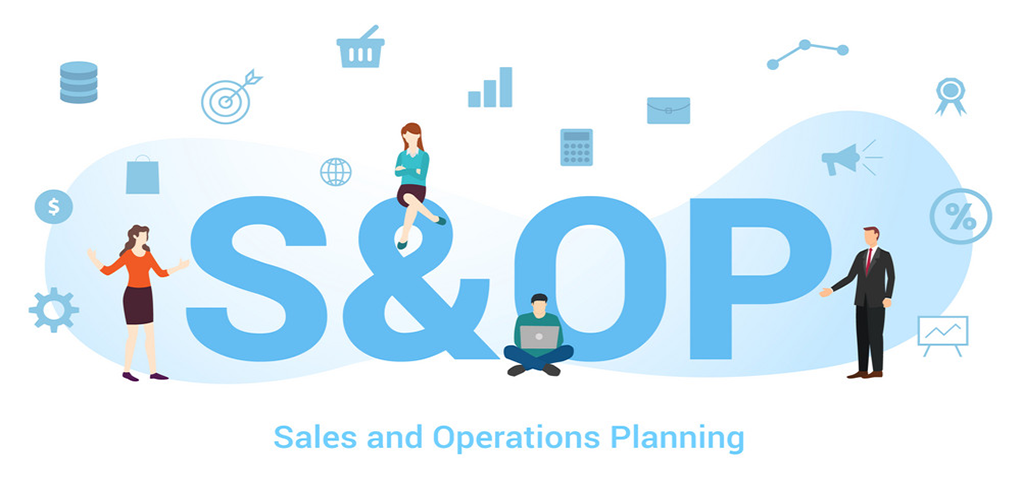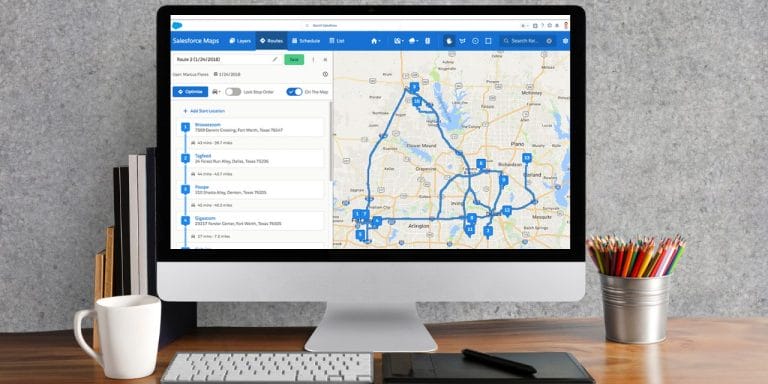Sales and operations planning, often abbreviated to S&OP, is the cross-functional process of ensuring a company can meet its forecasted production, distribution, and purchasing demands. It’s a process that creates alignment between sales teams and operations teams, and it increases visibility across your entire organization.
In this post, we explain what sales and operations planning is, methods for S&OP planning, common steps in the S&OP process, and a whole lot more. Let’s get started!
What Is Sales And Operations Planning?
Sales and operations planning is the process of managing a business’s key components, such as sales, finance, and the supply chain. Small companies with only a few business processes may not need robust sales and operation planning. But as businesses grow, leadership should implement S&OP in order to:
- Gauge whether staffing levels are adequate
- Define short- and long-term goals
- Evaluate whether sales territories are performing as expected
- Determine whether to allocate budget for new priorities
- Improve resource planning
This process requires business leaders to analyze internal data and reporting, and extract essential insights. With that information, they can begin the planning process.
Methods Of Sales And Operations Planning
The sales and operations planning process can be handled in one of two ways:
Top-Down Planning: This approach to sales and operations planning focuses on sales projections, upon which management professionals build their strategy and allocate resources to achieve their objective.
Bottom-Up Planning: This approach to S&OP is common in situations where manufacturing timetables are inconsistent. Rather than basing plans on a specific sales forecast, this strategy focuses more on improving the internal processes that would boost sales.
6 Benefits of Sales and Operations Planning
The operations planning process takes time. That’s why it often becomes a low priority for busy companies. But the benefits of “getting your house in order” are significant.
Here are reasons S&OP should be a high priority:
1. Dismantles Departmental Silos
The real value of S&OP is that it fosters cross-functional collaboration. By eliminating departmental silos, every facet of a company is able to align using common data points, which often leads to increased accuracy, better efficiency, and lower costs.
Organizational collaboration is a hot-button topic in 2024. But unless every department is aligned via a single S&OP process, it’s nearly impossible to achieve.
2. Optimizes Inventory Management
Inventory management can make or break a business. If your team doesn’t produce enough products, customers will grow impatient and angry as they wait for their orders and your brand’s reputation will suffer. But producing too many products is equally hazardous. A warehouse full of unsold goods can quickly lead to cash flow issues.
Because an S&OP plan analyzes consumer buying habits, as well as a company’s ability to meet potential demand, inventory management greatly improves.
3. Increases Throughput
If you’re not familiar with the term, “throughput” is the volume of items or materials that pass through a specific system or process.
Streamlining your op processes helps you create more products in less time. And that means you have a comfortable level of product stock and are more resilient to hiccups in the supply chain.
Additionally, increasing your production and distribution capacity without the need for additional resources helps your company’s financial performance.
4. Improves Delivery Speed
We touched on it briefly, but it bears repeating: Sales and operations planning will improve delivery speed, thus improving customer satisfaction in the process.
Fair or not, Amazon set the bar with its two-day (sometimes even quicker!) shipping policy. When your customers order a product, they want it now, not later. By improving inventory accuracy and making sure your organization always has the proper amount of products in stock, your customer will receive their orders in a timely fashion.
S&OP will ensure your company is able to reduce lead times and come closer to meeting customer expectations in this regard.
5. Enhances Customer Service
Happy customers can become lifelong buyers. Since it costs four to five times less to keep a customer than it does to get a new one, it’s important to ensure customer satisfaction.
Op processes enhance customer service by standardizing steps in client-facing interactions. For example, you can define how you respond to support requests, who responds to them, and who is responsible for ensuring tasks are completed on time. Repeatable processes are the foundation of great customer service.
6. Boosts Profits
Higher profitability is a result of the five other sales and operations planning benefits we just discussed. If your company eliminates organizational silos, increases efficiency, and focuses on customers, your entire organization benefits.
Challenges of Sales And Operations Planning
Implementing S&OP does come with some challenges. The primary challenge is getting buy-in from leadership — the manager who sees a need for S&OP may need to convince financial decision-makers that its benefits outweigh any expenses.
Depending on the size of a business, several people may be involved in the development and implementation of S&OP. To prevent miscommunication and a prolonged implementation, it’s helpful for one person to spearhead the S&OP initiative, set the agenda for discussions, and define a timeline for launching any new processes.
Common Steps in the S&OP Process
Here’s a step-by-step guide for developing and implementing your process:
1. Data Gathering
This step involves gathering data and documenting your processes that you’ll incorporate in your plan. You might need to dig into your CRM, your financial reports, and sales data to get a full view of your company.
2. Demand Planning
This step requires collaboration between multiple departments to complete properly. Executives from sales, operations, marketing, etc. come together to adjust inventory levels, marketing and sales strategies, and customer service policies to match the data gathered in the previous step.
3. Production Planning
Next, company leadership analyzes their company’s supply chain in regards to capacity. They’ll decide if the current set up — manpower, machinery, suppliers, etc. — are adequate for their forecasted needs. A supply plan is then crafted on the decision they reach.
4. Pre-SOP Meeting
This stage of the S&OP process requires leadership personnel from multiple departments to meet, collaborate, and evaluate the financial ramifications of the forecasted demand and supply plans. You may need to involve other key supply chain partners at this stage.
5. Exec S&OP Meeting
Next, leaders from finance, sales, operations, marketing, and other relevant departments meet once again to discuss insights from the data-gathering process and develop a viable sales operation plan.
6. Finalize and Implement S&OP
Finally, once the S&OP plan is finalized and approved, it’s implemented and monitored for effectiveness.
By conducting each of the meetings above, you’ll be able to implement a winning sales and operations plan for your organization.
Key S&OP Metrics
Sales and operations planning isn’t a one-time event. You need to monitor key metrics to evaluate the strength of your S&OP plan.
Demand Forecast Accuracy
Did you accurately forecast demand, or were your projections off? This is an easy metric to track. If you balance supply and demand, you should be able fulfill customer orders without carrying excessive inventory that can boost inventory management costs.
Review inventory and sales data to look for signs of imbalance, like a high number of backorders, or products that are taking up warehouse space instead of bringing in revenue.
On-Time Delivery
It’s important to ensure your team is delivering products on time. If not, you need to find out why.
Sluggish delivery times could be the result of your sales software and inventory software not integrating effectively, or a fulfillment process with too many steps. Talk to people who are involved in your day-to-day fulfillment and delivery processes, because their insights may give you valuable context.
Total Sales
Sales numbers will help you see what’s working and what’s not. Low sales don’t always mean sales teams aren’t doing the work. Maybe you need to improve your sales process, provide additional sales training, or automate follow-up reminders to ensure no leads fall through the cracks.
Customer Turnover
When you set out to improve customer service, you have to review CRM data to know whether your plan is working. A high turnover rate might indicate that there’s a gap in your customer service.
Tips for Improving Your S&OP Process
To ensure the S&OP plan is as effective as it possibly can be, keep these best practices in mind:
1. Start At The Top
Your efforts will only be successful if company leaders buy-in and lead the charge. Without executives, the process will get bogged down as lower-level employees continually seek approvals.
Plus, upper management sets the tone and mentality for the entire company. When everyday team members see their bosses making a point to prioritize the S&OP process, they’ll naturally learn to prioritize it too.
2. Define The End Goal
What is your organization trying to achieve? Inventory optimization? Reduced supply chain costs? Better demand forecasting?
Whatever your objective, make sure it’s clear to all at the beginning of your S&OP process flow. That way everyone involved knows what they’re aiming for and can collaborate cross-functionally to achieve it.
3. Know Your Sales Numbers
It’s common knowledge that sales are hard to forecast. There are just too many variables to effectively predict the number of sales a company will make within a given time frame. But that doesn’t mean you shouldn’t even try.
By studying your sales numbers from months and years past, you can work out future sales projections with reasonable accuracy.
A tool like SPOTIO will give you accurate, real-time information regarding your team’s sales numbers, which can be used to improve your forecasting efforts.
4. Plan For The Unknown
Nothing in life — or business — is guaranteed. As such, it’s vital that you plan for the unknown. Have contingency strategies for multiple scenarios. If you lose your biggest client, how will your company pivot? If you land a new mega-account, how will you handle demand planning?
You can’t plan for everything, nor should you try. But having a few backup strategies in place is just smart business and should become a part of your sales and operations plan.
5. Understand the Importance Of Supply And Demand Plans
Demand forecasts and supply planning are critical, and you need a plan that accounts for the multiple variables in the supply chain.
For example, were you to land a new account and increase production to meet heightened demand over the next six weeks, modeling will be able to tell you what kind of short-term financial setbacks you’re likely to incur, as well as long-term benefits. Management can then use this information to make more informed decisions.
Do your company a favor and study your supply chain by modeling different scenarios and understanding how certain changes affect your company as a whole.
S&OP Software
The good news is, there are great S&OP software solutions to help you implement and monitor everything we’ve covered in this article. Here are a few top options:
SAP Integrated Business Planning
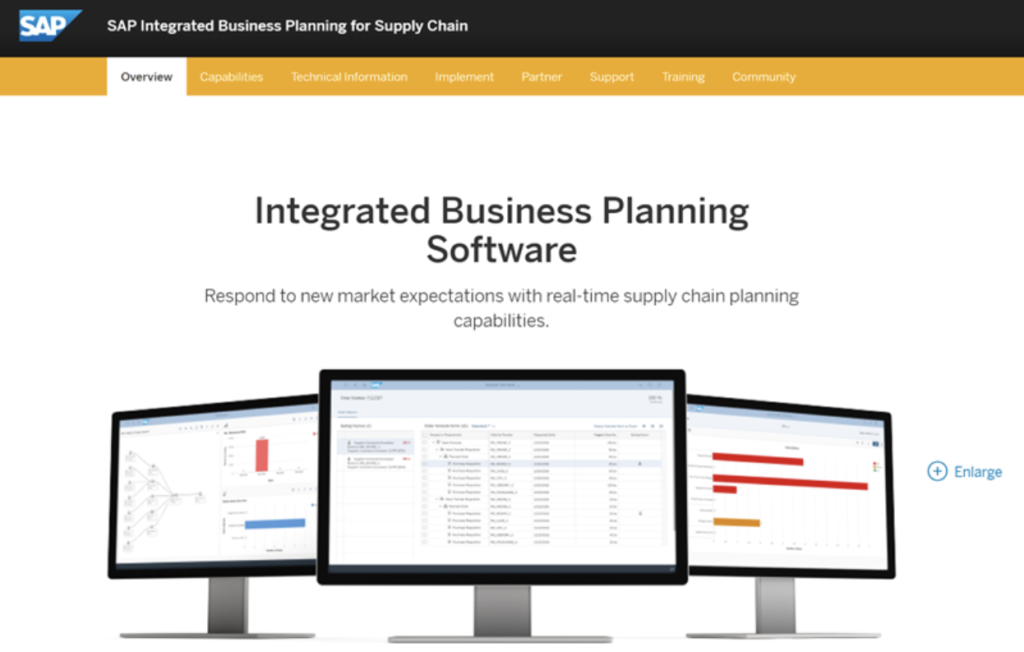
SAP Integrated Business Planning is a popular solution for S&OP purposes. The tool features scenario planning and simulations, social collaboration, and powerful predictive analytics. When combined together, these capabilities ensure organizations are able to plan their resources effectively and monitor their results with ease.
SAP Integrated Business Planning is available for purchase as a monthly subscription, though pricing details are not listed on its website. Contact a SAP representative for more information.
Key Features:
- Plan all of your company’s important business processes in real time
- Run what-if analysis to better plan for supply and demand changes
- Get visibility into your supply chain and improve decision making
- Monitor performance against plans and find areas of improvement
- Forecast future needs and potential problems with greater accuracy
Infor Sales and Operations Planning
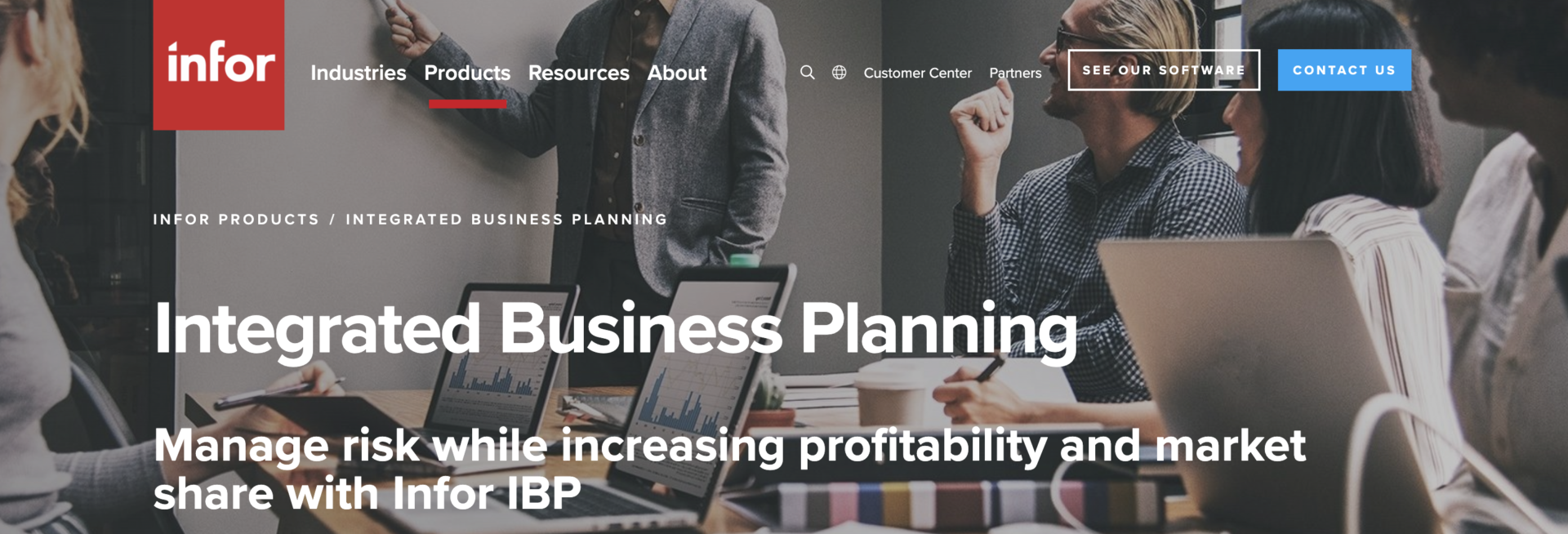
Infor Sales and Operations Planning is another great tool for S&OP purposes. Like its competitor, SAP, the Infor solution allows users to easily monitor sales and operations.
A few specific features include the ability to synchronize supply and demand imbalances, evaluate “what if?” scenarios to master the connected value chain, and visualize data to quickly compare to multiple statistical forecast models. Infor also comes with 24/7 elite support.
Pricing information is not available on the Infor website. Contact the team for cost details.
Key Features:
- Coordinate stakeholders from every department within your company
- Get the data you need to make better decisions and accelerate time-to-value
- Align your production efforts with demand to reduce risks to your organization
- Minimize many different transportation, overtime, and inventory holding costs
- Access industry templates to help track key KPIs and manage performance
SPOTIO Field Sales Engagement Platform
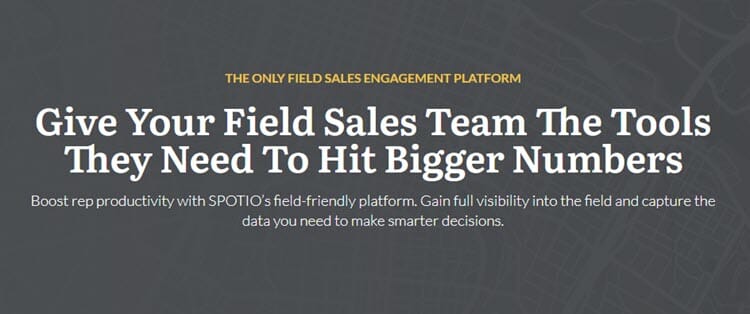
Lastly, we have SPOTIO, which is not a traditional S&OP software. But it does have valuable tools, which companies can use to better manage outside sales reps, plan sales strategies, forecast future results, and measure sales team success. This is important information to have when sales and operations planning.
From lead generation solutions to appointment setting options to CRM integrations, SPOTIO is packed with the features you need to both sell and make solid business decisions. Request a free demo today and see the sales operations software in action for yourself.
Key Features:
- Cut territories based on geographic boundaries or by drawing on a digital map
- Visualize your pipeline and other vital data points via color-coded pins on a map
- Automate a variety of manual sales tasks and boost productivity by up to 46%
- Track important sales data, then use it to generate custom reports for your team
- Use the data at your fingertips to forecast future sales with greater accuracy
- Integrate SPOTIO with your other sales tools, like CRM software and Zapier
The Value of S&OP
Business leaders may recognize the value of sales and operations planning yet not know how to implement it. With the right software — like SPOTIO — companies can begin the S&OP process immediately, focusing on essential business functions, then expanding S&OP to other areas over time.
SPOTIO gives you the real-time data you need to make better business decisions, improve your forecasting, and troubleshoot underperforming territories. It also helps sales reps work more efficiently, eliminating the need for tedious administrative tasks.
Sign up for a free demo of SPOTIO today to see if it meets your company’s S&OP needs!
